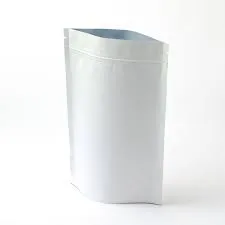- Afrikaans
- Albanian
- Amharic
- Arabic
- Armenian
- Azerbaijani
- Basque
- Belarusian
- Bengali
- Bosnian
- Bulgarian
- Catalan
- Cebuano
- chinese_simplified
- chinese_traditional
- Corsican
- Croatian
- Czech
- Danish
- Dutch
- English
- Esperanto
- Estonian
- Finnish
- French
- Frisian
- Galician
- Georgian
- German
- Greek
- Gujarati
- haitian_creole
- hausa
- hawaiian
- Hebrew
- Hindi
- Miao
- Hungarian
- Icelandic
- igbo
- Indonesian
- irish
- Italian
- Japanese
- Javanese
- Kannada
- kazakh
- Khmer
- Rwandese
- Korean
- Kurdish
- Kyrgyz
- Lao
- Latin
- Latvian
- Lithuanian
- Luxembourgish
- Macedonian
- Malgashi
- Malay
- Malayalam
- Maltese
- Maori
- Marathi
- Mongolian
- Myanmar
- Nepali
- Norwegian
- Norwegian
- Occitan
- Pashto
- Persian
- Polish
- Portuguese
- Punjabi
- Romanian
- Russian
- Samoan
- scottish-gaelic
- Serbian
- Sesotho
- Shona
- Sindhi
- Sinhala
- Slovak
- Slovenian
- Somali
- Spanish
- Sundanese
- Swahili
- Swedish
- Tagalog
- Tajik
- Tamil
- Tatar
- Telugu
- Thai
- Turkish
- Turkmen
- Ukrainian
- Urdu
- Uighur
- Uzbek
- Vietnamese
- Welsh
- Bantu
- Yiddish
- Yoruba
- Zulu
Exploring the Most Sustainable Packaging Options for a Greener Future
What is the Most Eco-Friendly Packaging?
In recent years, the world has witnessed a growing awareness of the environmental impact of packaging materials. With the surge in consumerism, packaging waste has become a significant contributor to pollution and environmental degradation. As a result, many businesses and consumers are seeking out more sustainable and eco-friendly packaging options. But what exactly qualifies as the most eco-friendly packaging, and why is it crucial for our planet's health?
First and foremost, eco-friendly packaging refers to materials that are designed to minimize their impact on the environment throughout their entire lifecycle. This includes sourcing, production, transportation, consumption, and disposal. The most eco-friendly packaging options are typically biodegradable, recyclable, or made from sustainable materials.
What is the Most Eco-Friendly Packaging?
Another important category is recyclable packaging. Materials like paper, cardboard, and certain plastics can be recycled and repurposed, thereby reducing the demand for new raw materials and minimizing waste. Many companies are adopting recyclable packaging to enhance their sustainability profiles. For example, brands that use recycled cardboard for their shipping boxes not only reduce waste but also convey a commitment to environmental stewardship, which resonates well with eco-conscious consumers.
what is the most eco friendly packaging

In addition to biodegradable and recyclable materials, sustainable packaging can also include compostable options. Compostable packaging is made from organic materials that can decompose into nutrient-rich compost when disposed of properly. This type of packaging is especially beneficial for food products and is gaining traction as more consumers become aware of the benefits of composting. Unlike standard plastic, which can linger in landfills for centuries, compostable packaging offers a solution that feeds the soil and contributes to the circular economy.
The choice of sustainable packaging material is essential, but it is equally important for companies to consider packaging design. Minimizing packaging size without compromising product integrity is a crucial step toward reducing environmental impact. By designing packaging that uses fewer materials, businesses can significantly decrease their carbon footprint. For instance, many brands are shifting towards minimalist packaging that emphasizes the product itself and reduces excess waste.
Additionally, businesses should explore using innovative packaging solutions such as reusable containers or refill systems. Companies like refillable cosmetics brands have emerged, encouraging consumers to return their empty packaging for reuse or refill, thus reducing single-use waste. These sustainable practices not only benefit the environment but also foster brand loyalty among consumers who appreciate eco-conscious efforts.
Consumer awareness plays a pivotal role in the demand for eco-friendly packaging. As individuals become more educated about the effects of plastic pollution and climate change, they increasingly seek out products with sustainable packaging. Companies that fail to adapt to these changing consumer values may find themselves at a competitive disadvantage.
In conclusion, the most eco-friendly packaging options include biodegradable, recyclable, compostable materials, and innovative design strategies that prioritize waste reduction. As businesses pivot towards sustainability and consumers increasingly demand environmentally friendly products, the market for eco-friendly packaging will continue to grow. Embracing these practices not only helps protect our planet but also represents a significant opportunity for brands to connect with conscientious consumers. Ultimately, the shift towards eco-friendly packaging is a vital step in creating a more sustainable future, and both businesses and consumers have a crucial role to play in this transformation.













